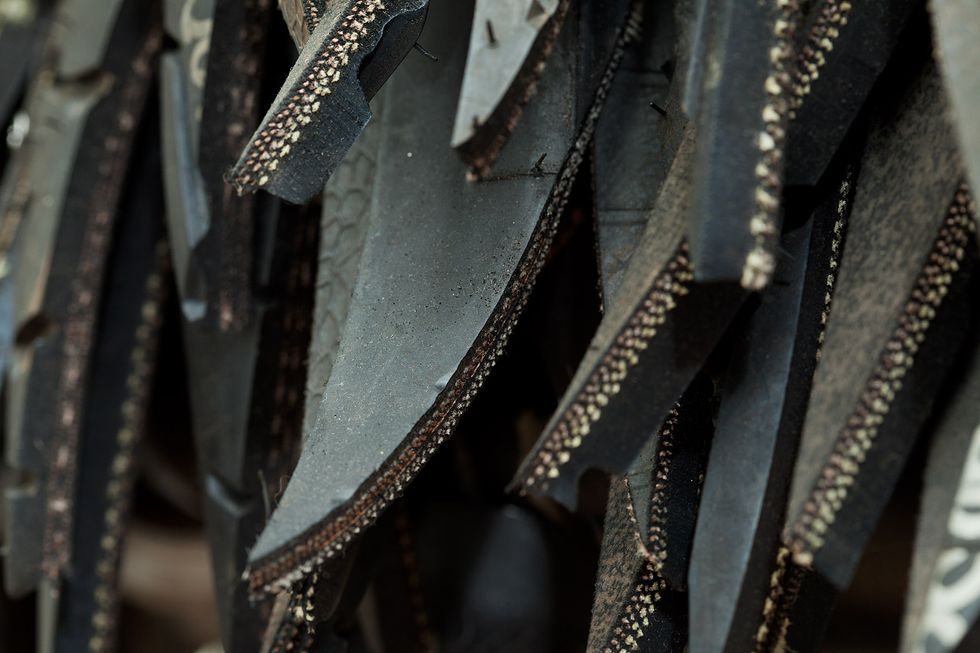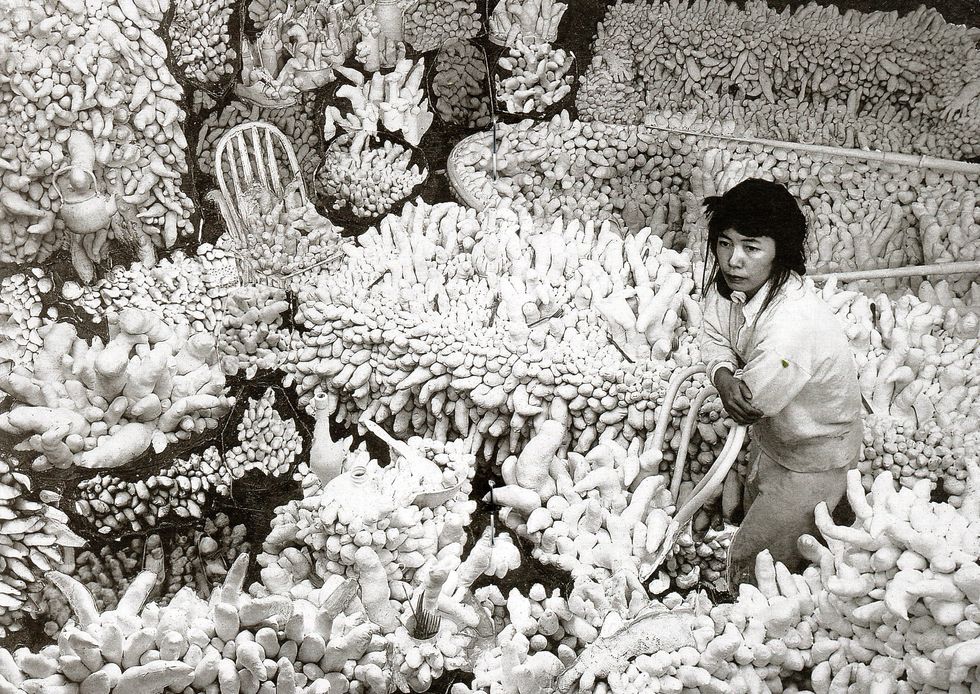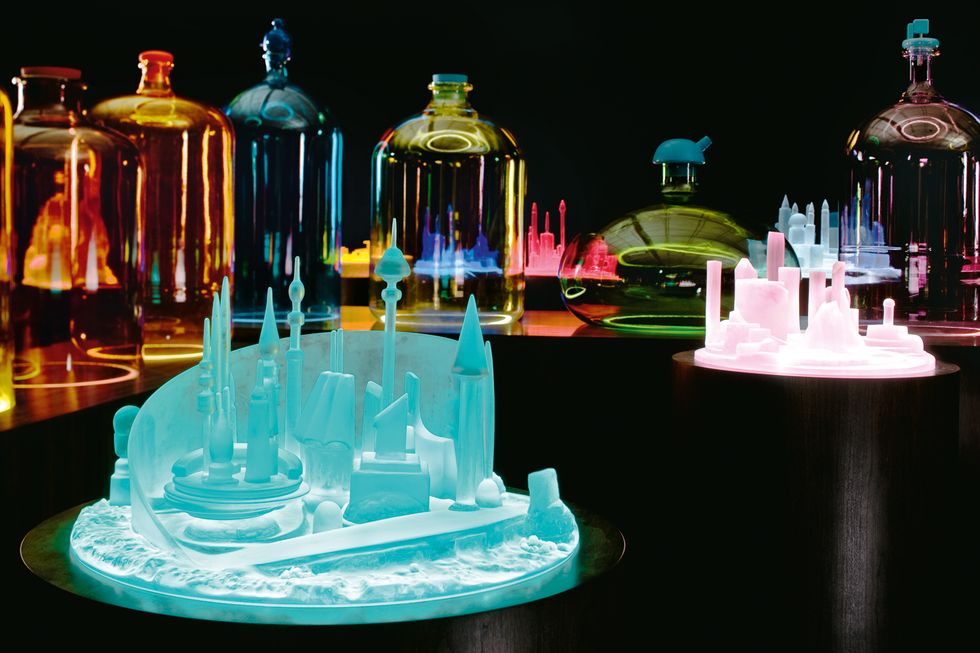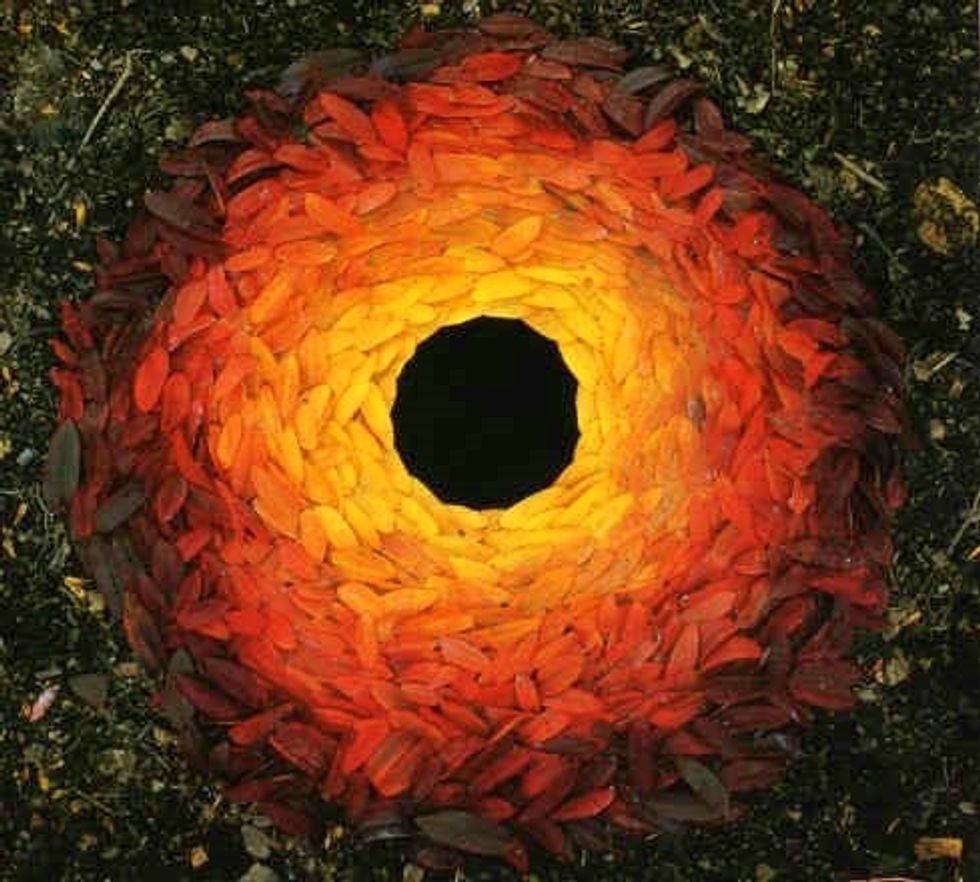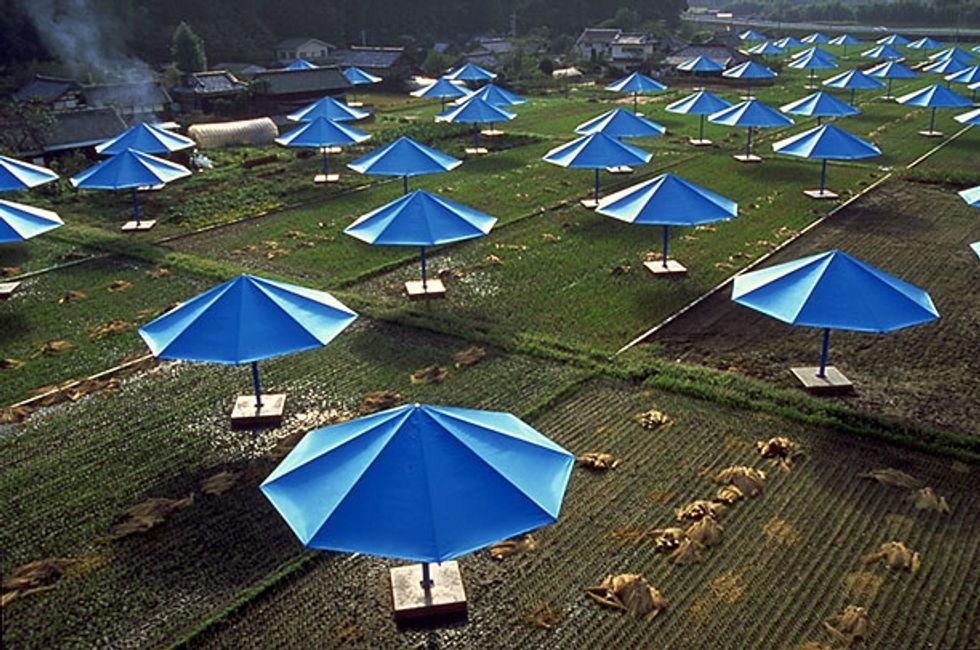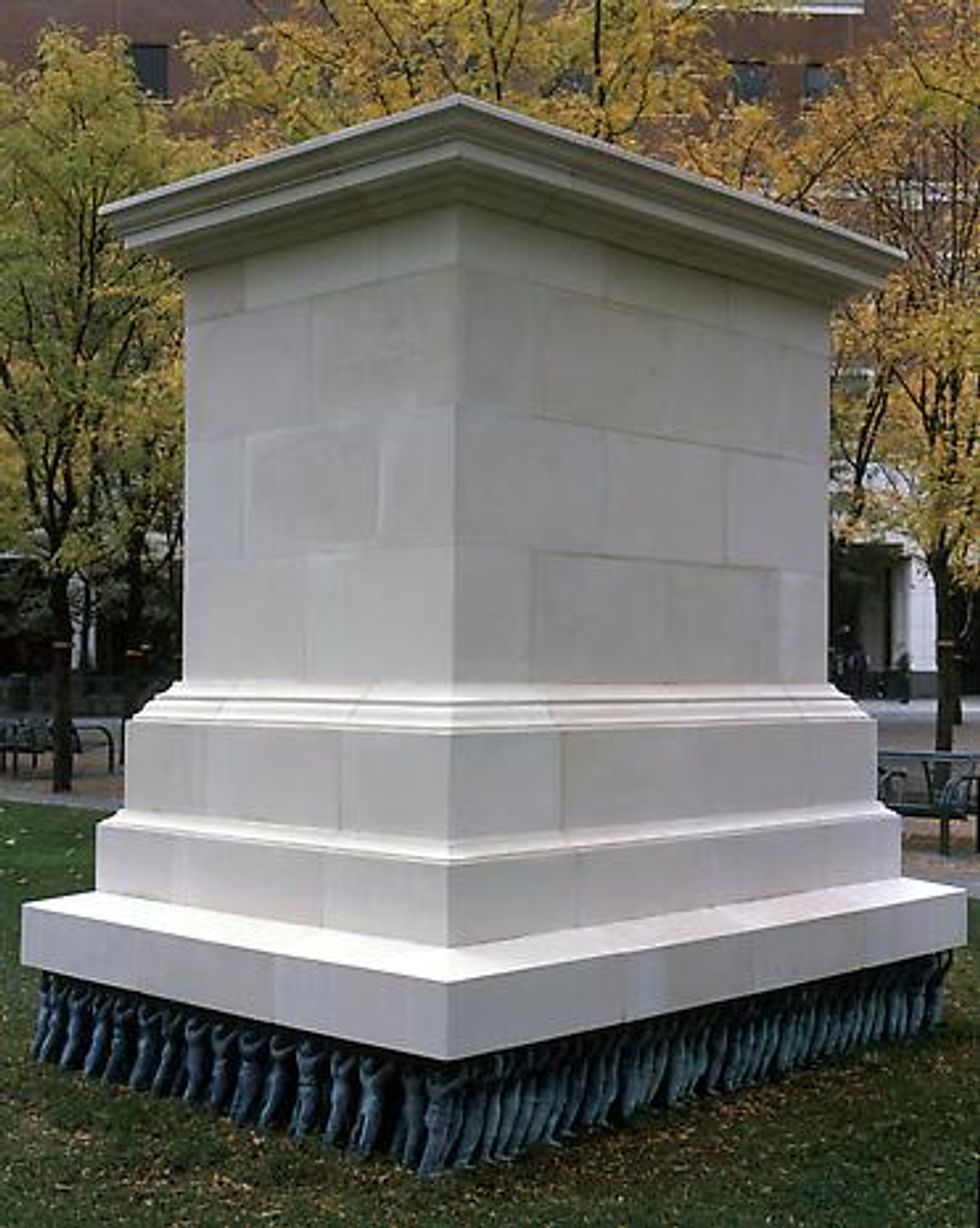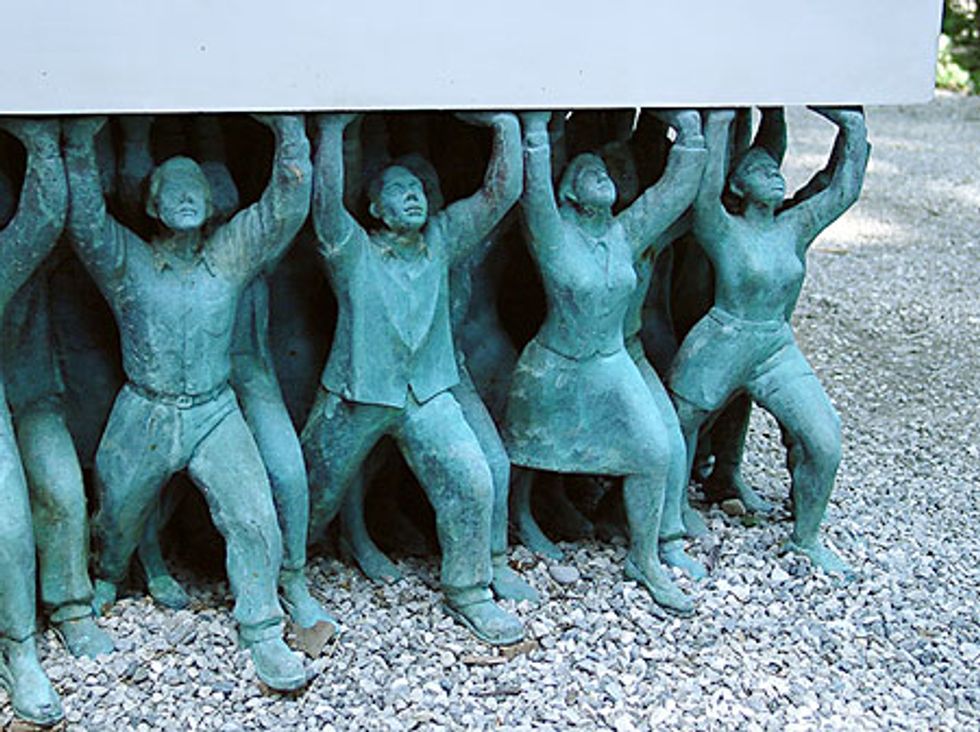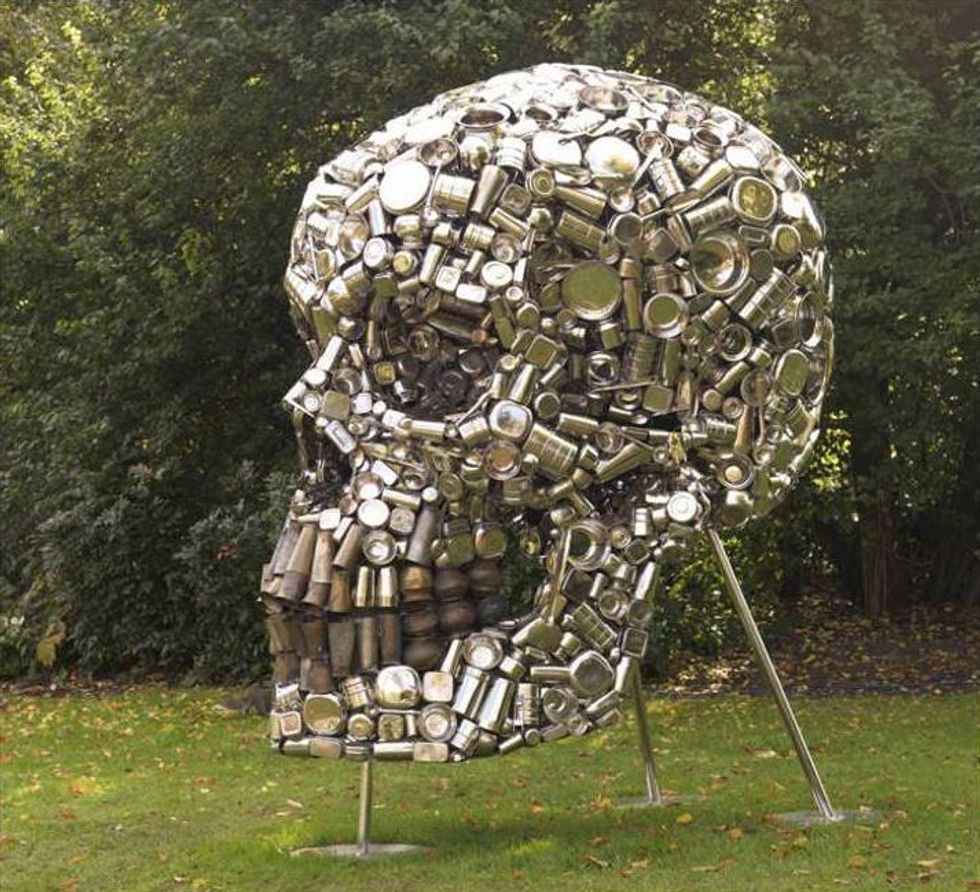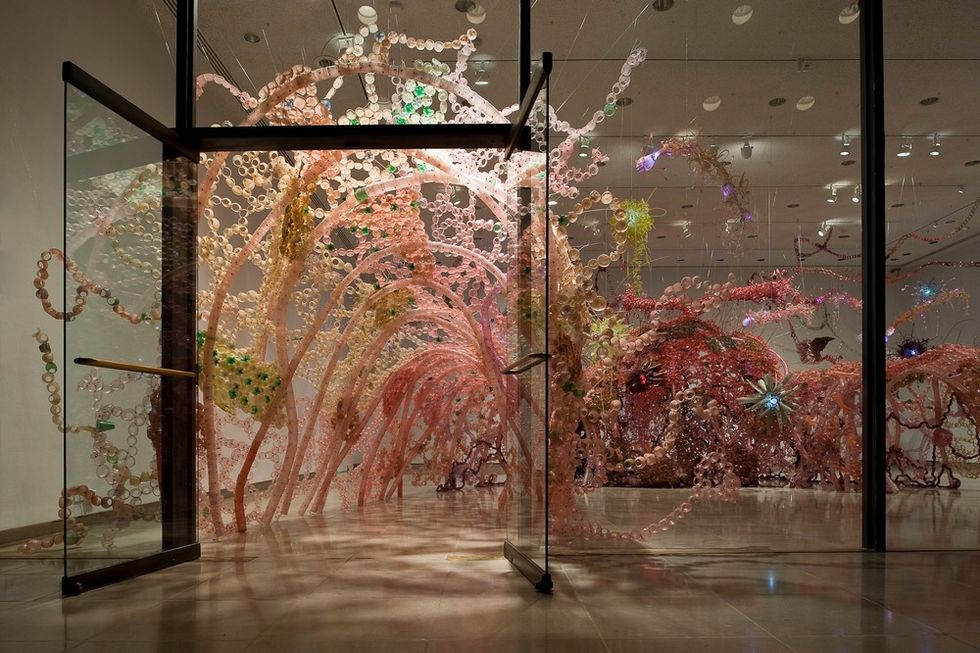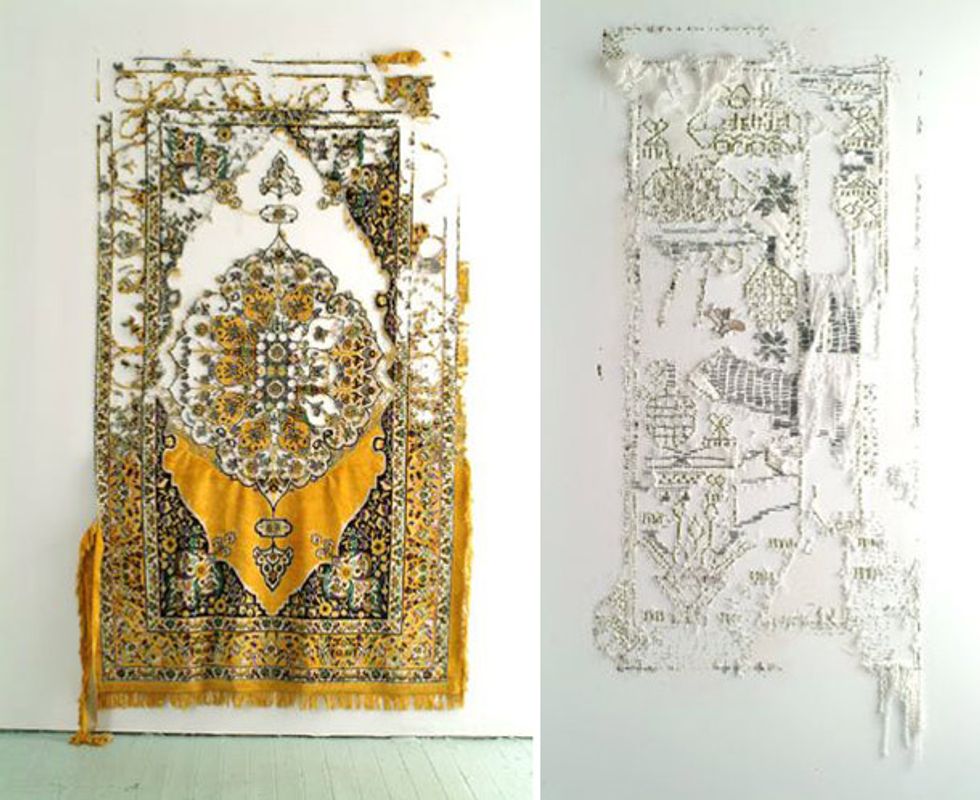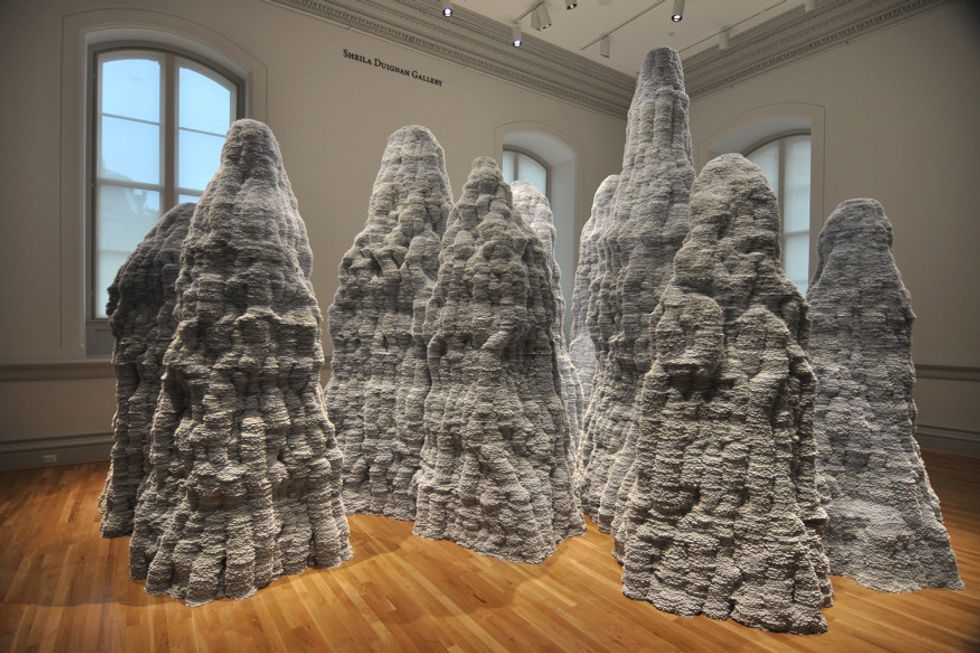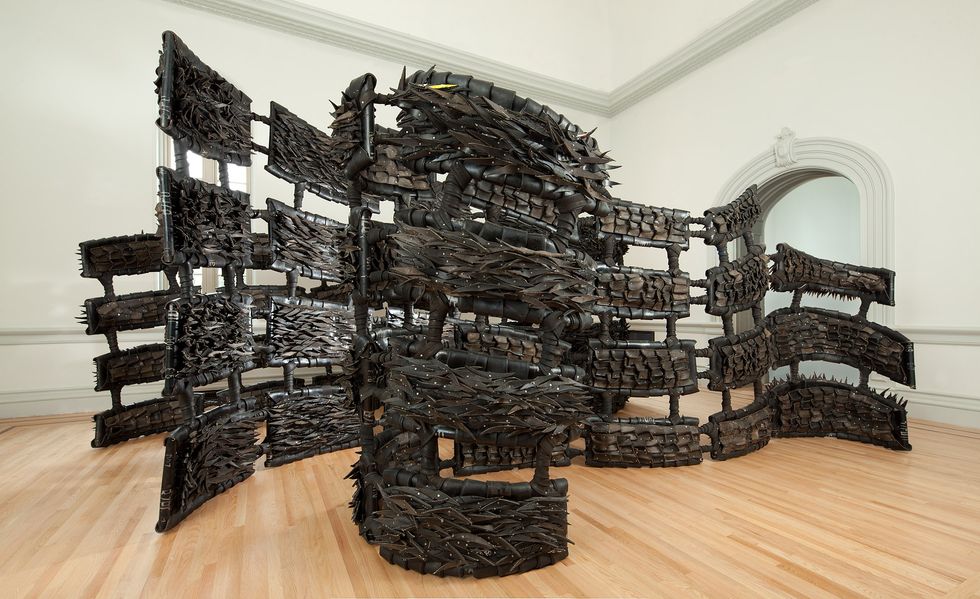Obsession, Repetition and Seriality
Do you ever notice a work of art that is composed of several smaller pieces? What about a process that is repeated over and over again within a composition? I'm speaking of artworks that requires the painstaking commitment of repetitive forms to exist as a piece. This motif in design is a lot more common than you may realize, and often holds conceptual meaning special to each artist.
As an instructor for the Fundamentals of 3D Design, I teach a lesson on this particular type of art. In many cases this can be described as "process art", though the term does not cover all facets of repetition in modern and contemporary art, which includes: Minimalism, Pop Art, Post-Minimalism, Environmental Art, Land Art and more through pieces that exist as sculptural forms, installations, paintings, assemblage, public monuments and fiber art.
Repetition in Art
Where You've Seen It:
Yayoi Kusama
Yayoi Kusama Compulsion Furniture (Accumulations Series), 1964Photo collage and paint
Repetition in Compulsion
Yayoi Kusama's life works are primarily composed of her signature polka dot patterns. Kusama has worked in a wide variety of mediums including painting, collage, sculpture, performance art and environmental installations, most of which exhibit her interest in pattern and repetition. Much of Kusama's work reflects the everyday compulsion and anxiety seeded in her life. As with her installation Compulsion Furniture, the artist obsessively covers pieces of found furniture covered in small, sewn protuberances. Metaphorically, they are interpreted as phalluses, a device with which the artist confronted her own deep-seated sexual anxieties.
Eva Hesse
Eva Hesse, Accession II 1968
Repetition in Post-Minimalism
Works by post-minimalist, Eva Hesse, are particularly interesting to those who have a base knowledge of contemporary art history. The works are considered post-minimal because of their close relationship to minimalism. Yet, where a minimalist cube is typically a sleek, closed form that praises the true essence of material purity - Hesse's cube turns that notion on its head. Hesse creates Accession II, an open cube, brimming with texture through interior rows of tubing that complicate its clean, exterior sensibility. Most of her work questions, what is minimalism? What is its opposite? Or with her piece titled Hang Up, she challenges what is a sculpture vs a painting?
Mike Kelley
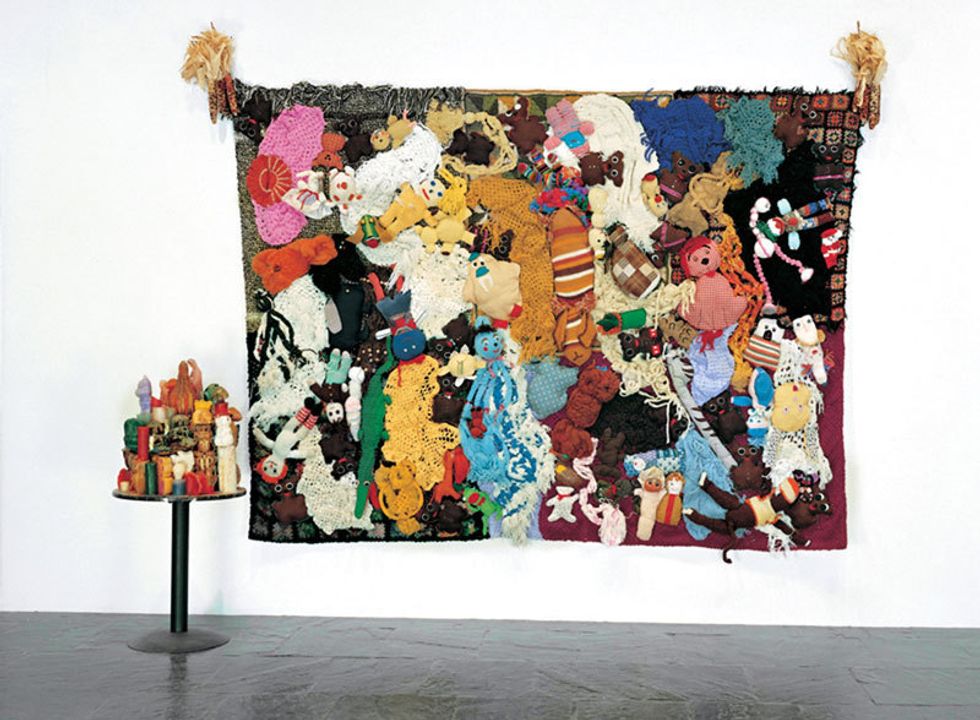
Repetition in Poetic Assemblage
While this piece may not be as striking as some of the others visually, it has a very profound meaning. The title "More Love Hours Than Can Ever Be Repaid" explains the concept behind the piece, which is composed of hand-made blankets, quilts and plushy stuffed animals. If each item in the assemblage were made by hand, the hours behind this labor of love could never be repaid.
Mike Kelley, Kandors, 1999 - 2001
Repetition in Repression
“Repressed memories called into art” is a common theme throughout Mike Kelley's body of work. Kelley held a mild interest in the Superman mythos, what was of greater interest to him was the comic's lack of consistency when illustrating Superman's birthplace and hometown, the bottled city of Kandor. Drastic changes in scale, urban continuity and formal properties such as building type and architectural style can be seen from comic to comic – all variants attributed to the diverse hands of pencilers and colorists detailing and abstracting Kandor over the span of Superman's existence (from the 1930s to present-day).
Kelley explained, “Kandor functions for Superman as a perpetual reminder of his inability to escape the past and his alienated relationship to his present world.” Kandor relates to Kelley's exploration of memory, trauma and repression. “Kandor as an eternally maintained but consistently reconfigured relic of Superman's childhood” acts as symbol for Kelley's interest in vague memory or repressed memory syndrome. Taking a further look at this repetition and noting Kelley’s interest in Freud, we might also decipher Kelley's repetition of Kandor as a way of dealing with trauma, to reenact a certain scene over and over in order to take anxiety away from it.
Andy Goldsworthy
Andy Goldsworthy, Rowan Leaves Laid Around a Hole, 1987
Repetition in Site Specific / Land Art
Andy Goldsworthy, the British sculptor, photographer and environmentalist, is the single best-known environmental land artist of all time. He is particularly tenacious due to the self-prescribed parameters of his works. Goldsworthy makes site specific works, only using natural objects from his environment - meaning no outside tools, thread, glue and the like. The artist resorts to careful balancing, and often uses only his bare hands, teeth, and found tools to prepare and arrange the materials. In fact, Goldsworthy is credited as the founder of modern rock balancing (and for those of you who have tried it, you know how difficult it is!)
"I think it's incredibly brave to be working with flowers and leaves and petals. But I have to: I can't edit the materials I work with. My remit is to work with nature as a whole." - Andy Goldsworthy
Christo and Jeanne-Claude
Christo und Jeanne-Claude Umbrella Project (Japan) 1991
Repetition in Environmental Art
From October 9, 1991 for a period of eighteen days, The Umbrellas were installed in Japan to be seen and enjoyed by the public. Christo and Jeanne-Claude's 26 million dollar temporary work of art was entirely financed by the artists through their The Umbrellas, Joint Project for Japan and U.S.A. Corporation. The pair of artists are best known for their environmental works that span great distances in populated landscapes, both rural and urban. They make these intense, year-long pieces to create works of art for joy and beauty. An alternative reason the couple gave for making this work is to create new ways of seeing familiar landscapes.
Do-Ho Suh
Do-Ho Suh, Public Figures, 2001
Repetition in Public Sculpture
Just looking at this sculpture what might you think the artist is commenting on regarding public monuments? What is unusual about this public monument? Typically, public monuments honor a sole hero among men who stands triumphantly on the pedestal. Instead, Suh shows gratitude for the thousands of men and women who help better their country and make victory possible.
"Let’s say there’s one statue at the plaza of a hero who helped or protected our country—there are hundreds of thousands of individuals who helped him, and there’s no recognition for them." — Do-Ho Suh
Subodh Gupta
Subodh Gupta, Very Hungry God, 2006
Repetition in Activism
This work is incredibly poignant and moving, as proven by its genesis story. The piece was originally intended to be shown in a church in Barbes on the outskirts of Paris which is largely inhabited by an immigrant population. The work was made in response to the stories Gupta read in the news about how soup kitchens in Paris were serving food with pork so that Muslims would not eat it. With this information, Gupta went on to serve vegetarian meals outside the church from hundreds of stainless steel containers. He then went on to use the pots and pans to build this remarkable art piece, Very Hungry God.
"Outside the church I served vegetarian daal soup as a form of “prasad” (in India when you go to a temple or a guduwara you are offered food with the blessing)." - Subodh Gupta
Jean Shin
Jean Shin Chance City, 2001 - 2009
Repetition in Social Commentary
Jean Shin is a contemporary artist working with ubiquitous discarded and re-purposed objects. Her piece Chance City took roughly nine years to create because it relied on the collection of thousands of un-won lottery tickets. Chance City is a fragile existence, composed of $32,404 worth of discarded "Scratch & Win" losing lottery tickets built up as a house of cards. The construction is an urban landscape mirroring the thousands of hopes placed on the now discarded scratch-and-win lottery tickets.
Aurora Robson
Aurora Robson The Great Indoors, 2008
Repetition in Environmental Conservation
Aurora Robson's entire artistic practice is based off intercepting the waste stream, from urban environemts to the polluted ocean. Robson pays the unemployed and homeless to help clean and collect the plastic debris used in her work, helping her community in more than one way. Robson used more than 15,000 discarded plastic bottles and plastic debris in her massive installation, The Great Indoors, a landscape based loosely on microscopic imagery of the human body. The installation is entirely environmentally friendly, composed of her collected debris tinted polycrylic and illuminated by solar powered LEDs.
“The Great Indoors is a landscape and a living organism. There’s an internal wilderness in action as we speak.” - Aurora Robson
El Anatsui
El Anatsui, Earth’s Skin, 2007. Aluminum and copper wire, 177 x 394 in.
Repetition in Globalization
El Anatsui's source material of aluminum waste and bottle-topsreferences consumption, globalization and cosmopolitanism. El Anatsui's iconic “bottle-top installations" are large-scale assemblages made from aluminum and bottle-tops sewn together with copper wire, composing metallic cloth-like wall hangings and sculptures. Customary in capitalism's wake, Anatsui looks to consumerism and waste brought on by colonialism and globalization in his works.
“I thought of the objects as links between my continent, Africa, and the rest of Europe. Objects such as these were introduced to Africa by Europeans when they came as traders. Alcohol was one of the commodities they brought with them to exchange for goods in Africa... I thought that the bottle caps had a strong reference to the history of Africa.”
“I am changing the meaning of bottle caps. Metaphorically I am working with the lifting of spirits.” “Sourced from a distillery in Nigeria, the bottle caps refer to the prevalence of liquor in West Africa, an industry that grew with colonialism in the Americas.”
- El Anatsui
Elana Herzog
Elana Herzog, Civilization and its Discontents, 2003
Repetition in Demise
Elana Herzog's work is characterized by the demise of carpets and rugs by means of stapling sections of the rug directly to gallery walls within each installation. The subject matter is common place, found in every corner of the world, while varied in value, spanning from the top designer rugs to those that can be found at Walmart. The rug is a material that connects us as people in all societies and civilizations. Herzog's deconstruction of Persian rugs and carpets began in early 2003, as the U.S. was preparing to invade Iraq. The patterns of the carpets utilized were based on the image of an Afghan War rug made in the 1980�s.
Tara Donovan
Tara Donovan, untiUntitled14
Repetition in Ubiquitous Materials
Tara Donovan transforms the ubiquitous and the mundane, using common place objects such as toothpicks, straws, styrofoam cups, scotch tape and index cards to create awe-inspiring works through the process of accumulation. The landscapes created from repeated forms transform the object until it can no longer be recognized.
Jennifer Angus
Repetition in the Unexpected
Don't freak out! These insects are long dead (and have died of natural causes), so we can enjoy these bizarre and beautiful intricate patterns, even when they give us the occasional jitters!
Jennifer Angus has been working with insects for over a decade. Her art involves pinning thousands of exotic dried insects to gallery walls in visually dynamic patterns and designs. The species in this installation are not endangered, they are quite abundant, primarily in Malaysia, Thailand, and Papua New Guinea.
Chakaia Booker
Chakaia Booker, Brick House, 2015
Repetition in the Urban Landscape
It seems artists are always looking for inspiration, when other times it just finds them. According to artist Chakaia Booker, she was first inspired to explore tires as a material while walking the streets of New York in the 1980s where this source material littered the urban landscape. These discarded tires and melted pools or rubber seemed promising to her, and she's been composing incredible works from rubber tires ever since!
Booker's Brick House can be found on Chicago's elevated trail, the 606, at Damen. Millennium Park is also exhibiting six recent sculptures Booker in a new exhibition in the Boeing Galleries - running now through April 2018.

